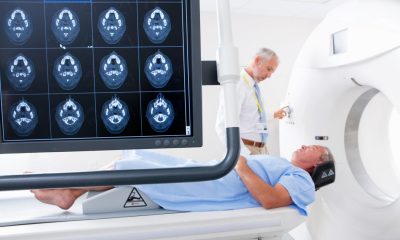By Tom Campbell via SWNS
COVID-19 lateral flow tests could be useless in schools as their ability to detect the virus in symptomless children is less than 60 percent, warns a new study.
Lateral flow or antigen tests have been widely used to test for COVID-19 infections in schools and kindergartens in many countries, including the UK.
The accuracy of these tests among adults has proven to be highly variable and often lower than official figures reported by manufacturers.
But how well they perform when it comes to testing children for the SARS-CoV-2 virus has remained a mystery, until now.
The findings, published in the BMJ Evidence-Based Medicine, show lateral flow tests perform below minimum standards set out by health organiszations around the world when used on children.
Dr. Naomi Fujita-Rohwerder at the Institute for Quality and Efficiency in Health Care (IQWiG) in Germany said: “Taking into account test-specific pooled results, no test included in this review fully satisfied the minimum performance requirements as recommended by WHO, the US Food and Drug Administration or the Medicines and Healthcare products Regulatory Agency (MHRA) in the UK.
“This may affect the planned purpose of the broad implementation of testing programmes.”
The researchers trawled through databases for studies published between 2020 and May 2021 which compared the accuracy of lateral flow and swab PCR COVID-19 tests.
They discovered 17 relevant studies involving 6355 children and eight different antigen tests from six different brands.
In 11 of the test evaluations, samples were collected from the throat and nose, while in the others, only nose samples were taken.
Data from all studies was pooled to determine how well the tests performed at picking up people with or without COVID-19, known as diagnostic sensitivity or specificity.
While the tests' specificity - ability to identify children without COVID-19 was 99 percent accurate, they only captured 64 percent of positive cases.
The analysis was then restricted to children with or without symptoms by the researchers.
Among those with COVID-19 symptoms, the lateral flow tests' positive hit rate - or sensitivity, increased to 72 percent.
But for those who did not show signs of being ill, the tests only diagnosed 56 per cent of positive cases.
Dr. Fujita-Rohwerder said: "These observed differences in test performance between children with and without symptoms show that sensitivity and specificity are not inherent test characteristics."
Most of the studies reviewed by the researchers were limited by inadequate reporting, and while they included eight different lateral flow tests, there are more than 500 on the market.
Dr. Fujita-Rohwerder said: “Sensitivity estimates of antigen tests varied broadly among studies and were substantially lower than reported by manufacturers, although the intended use of most tests is limited to people with symptoms, so performance data reported by manufacturers usually refer only to those with symptoms.
"Less variation and only minor discrepancies to performance claims by manufacturers were observed for specificity estimates across studies.”
Lateral flow tests have been rolled-out to complement PCR tests and extend capacity at short notice.
Dr. Fujita-Rohwerder added: "Nevertheless they come at the price of lower diagnostic accuracy, most notably a lower diagnostic sensitivity, which increases the risk of missing cases, including those with pre-symptomatic infection who have yet to enter the most infectious period.
"Whether this can be compensated for with frequent testing remains a moot point."

 Parenting1 week ago
Parenting1 week ago
 Lifestyle1 week ago
Lifestyle1 week ago
 Wildlife3 days ago
Wildlife3 days ago
 Good News4 days ago
Good News4 days ago
 Health4 days ago
Health4 days ago
 Entertainment1 day ago
Entertainment1 day ago
 Animals9 hours ago
Animals9 hours ago
 Broadcast14 hours ago
Broadcast14 hours ago




















